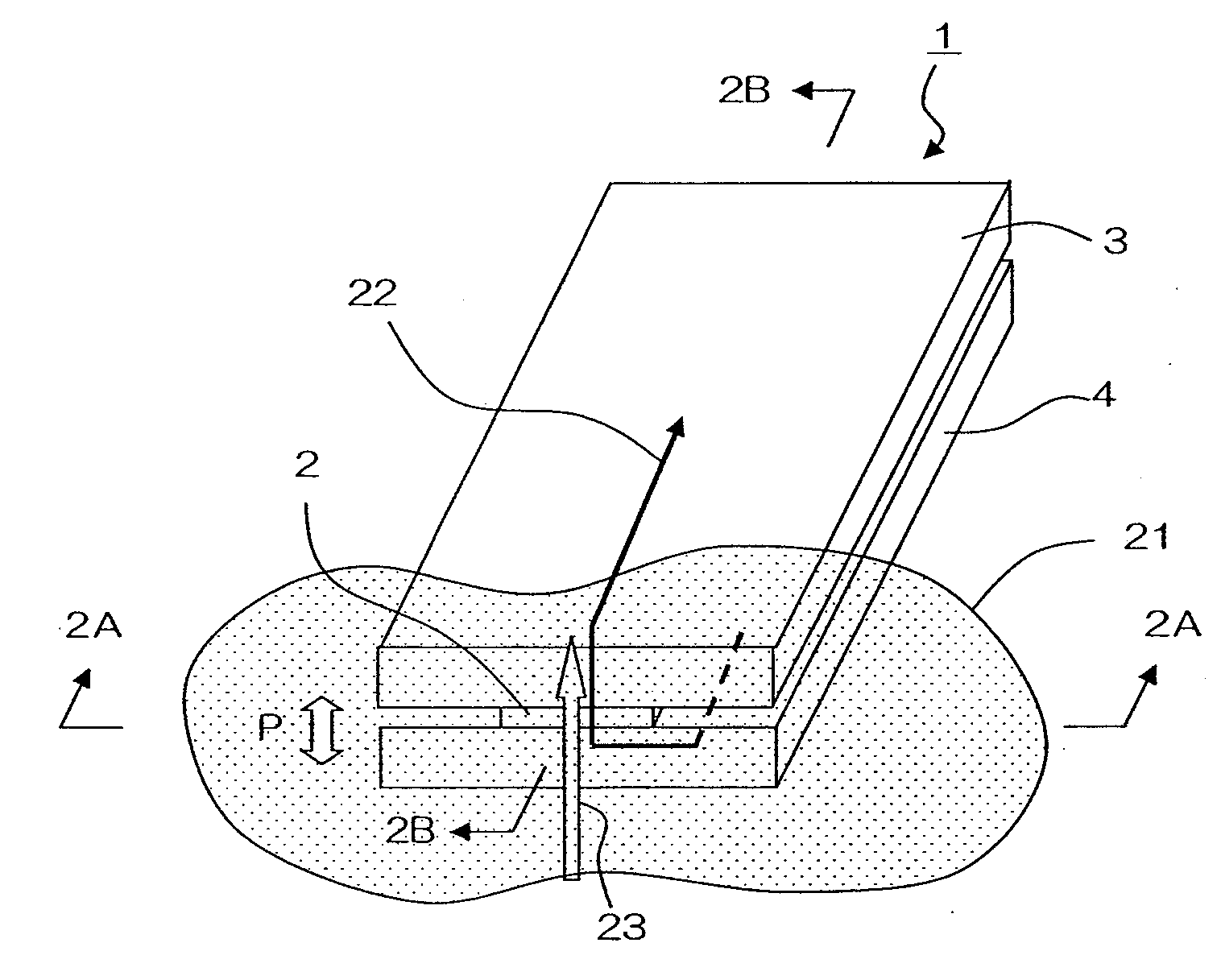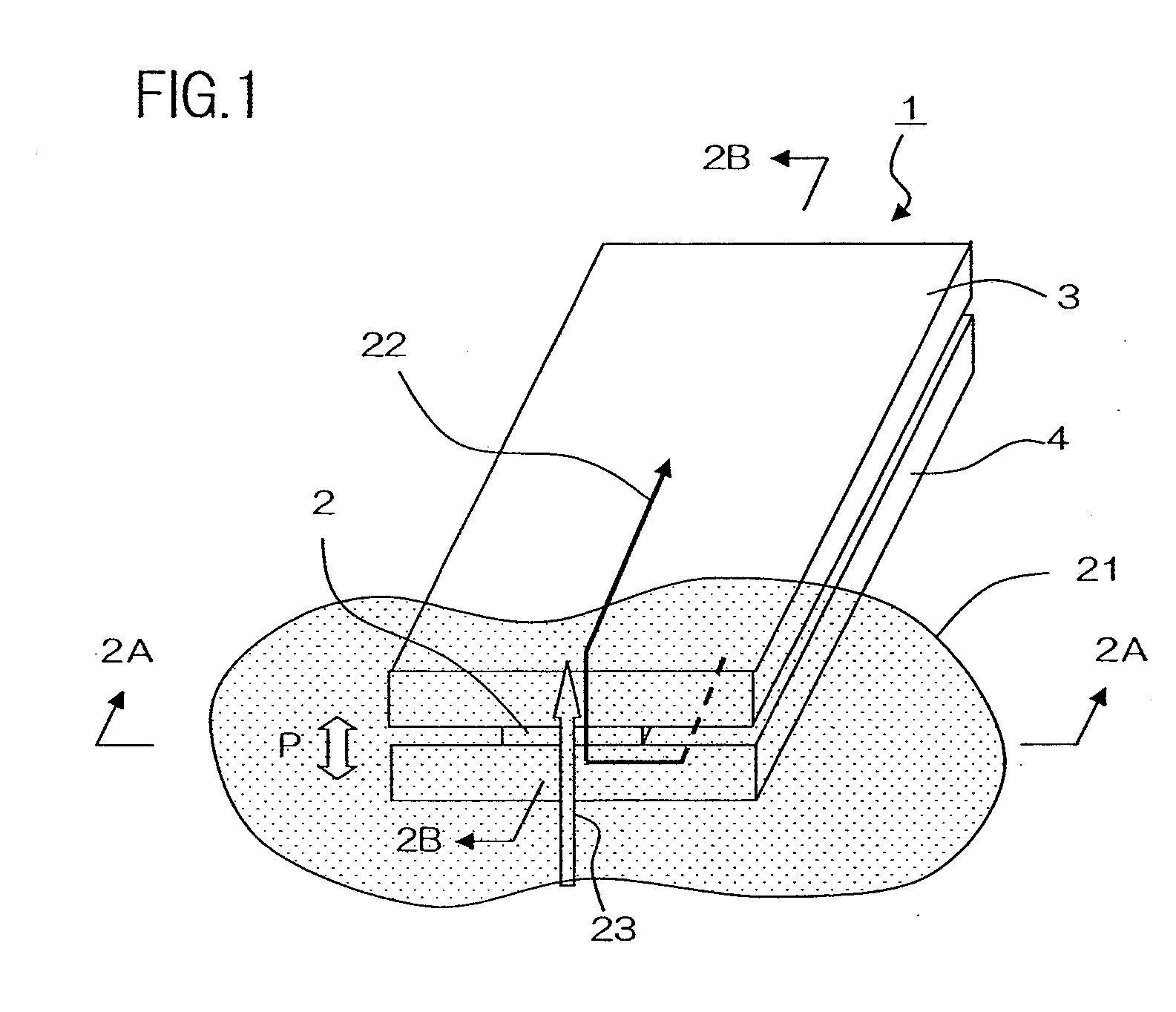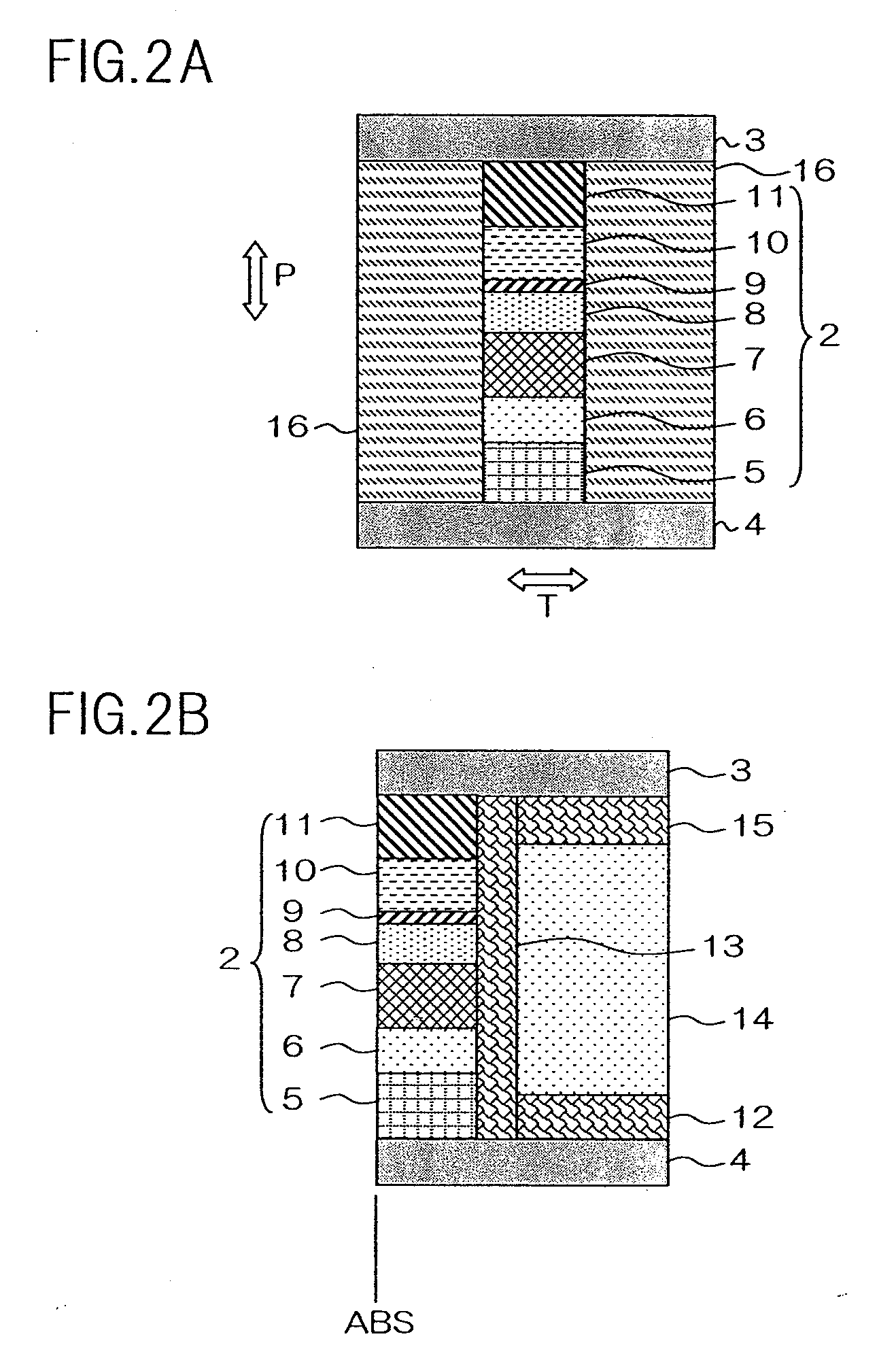Cpp magneto-resistive element provided with a pair of magnetic layers and nicr buffer layer
a magneto-resistive element and buffer layer technology, applied in the field of magnetic field detecting elements, can solve the problems of significantly low electrical resistance, limiting the degree to which the film thickness of the stack can be reduced, and effectively limited barkhausen noise, etc., to achieve sufficient exchange coupling, increase the electrical resistance, and large the effect of magneto-resistive
- Summary
- Abstract
- Description
- Claims
- Application Information
AI Technical Summary
Benefits of technology
Problems solved by technology
Method used
Image
Examples
Embodiment Construction
[0025]A preferred embodiment of the present invention will be described below with reference to the accompanying drawings. The magnetic field detecting element of the present embodiment is suitable for use as the read head portion of a thin film magnetic head of a hard disk device. FIG. 1 illustrates a conceptual perspective view of the magnetic field detecting element of the present embodiment. FIG. 2A illustrates a side view of the magnetic field detecting element as seen from direction 2A-2A of FIG. 1, i.e. as seen from the air bearing surface; and FIG. 2B illustrates a sectional view of the magnetic field detecting element cut along line 2B-2B of FIG. 1. The air bearing surface refers to the face of magnetic field detecting element 1 that faces recording medium 21.
[0026]Magnetic field detecting element 1 includes stack 2, upper shield electrode layer 3 and lower shield electrode layer 4 that sandwich stack 2 in the direction of stacking thereof, bias magnetic layer 14 that is ar...
PUM
| Property | Measurement | Unit |
|---|---|---|
| thickness | aaaaa | aaaaa |
| thickness | aaaaa | aaaaa |
| thickness | aaaaa | aaaaa |
Abstract
Description
Claims
Application Information
 Login to View More
Login to View More - R&D
- Intellectual Property
- Life Sciences
- Materials
- Tech Scout
- Unparalleled Data Quality
- Higher Quality Content
- 60% Fewer Hallucinations
Browse by: Latest US Patents, China's latest patents, Technical Efficacy Thesaurus, Application Domain, Technology Topic, Popular Technical Reports.
© 2025 PatSnap. All rights reserved.Legal|Privacy policy|Modern Slavery Act Transparency Statement|Sitemap|About US| Contact US: help@patsnap.com



